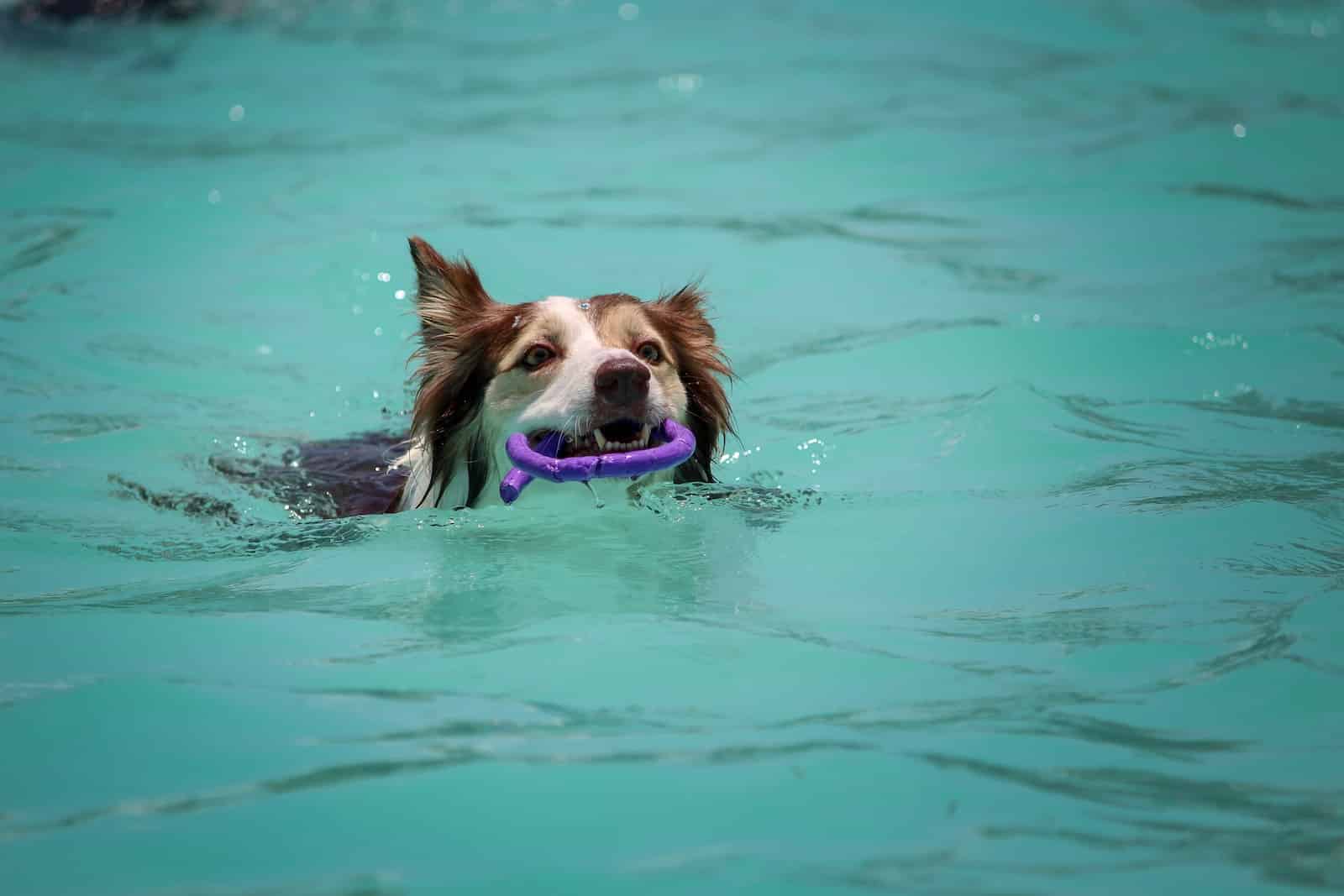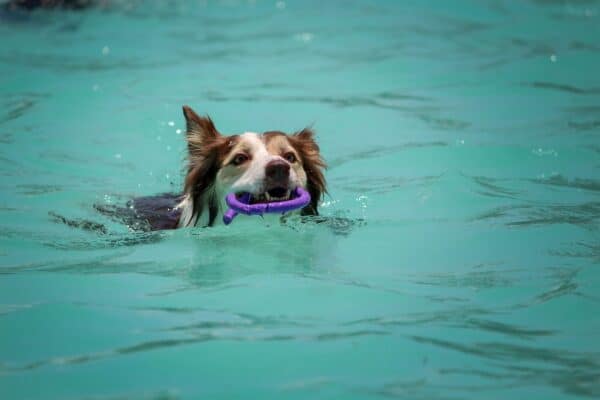When I adopted my Lab mix, GhostBuster, I assumed that he would love water, but a few trips to local swimming holes have proved me wrong. It seems Buster is much more comfortable watching from the sidelines or dipping a few toes than diving right in, but I fear his hesitation may be my fault.
The first time I took him to an outdoor dog swimming area, he just waded in a couple inches and plopped himself down to lay in the shallowest part of the water. I guess it was a good way for him to get cool without going in very deep. The second time we took him swimming we went to a different river beach, and GhostBuster adventured out a little bit further. As he approached the area where the swimming hole meets the river I called him back pretty quickly. I think my nervousness ruined the experience for him, because he didn’t want to get back into the shallow swimming hole after that.
According to Lui Yi, owner of Waterpaws Indoor Canine Aquatic Centre, I never should have had GhostBuster at a river in the first place — even if humans do swim there. Yi says all dogs should learn how to swim, but a lake would have been a much more appropriate choice. “Rivers are dangerous with currents, especially when teaching a dog to swim. Even the greatest swimmer can be sucked under by a current and be gone forever.”
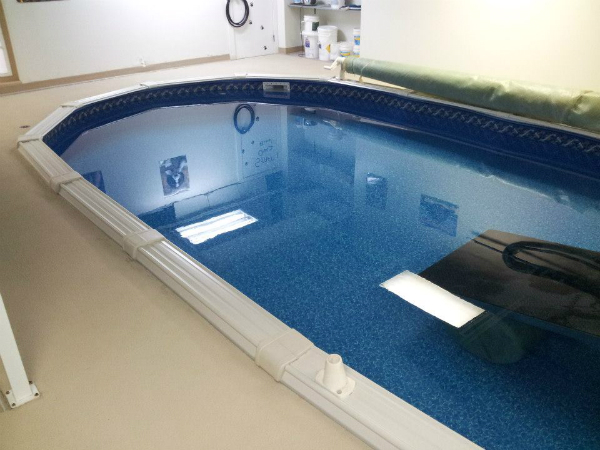
GhostBuster seemed to sense that, because when I took him back to the local dog beach (part of a river) a couple weeks later, he wouldn’t go in past his knees. When my flip-flop started to float away it was a human child who retrieved it for me, not my lovable Lab. I now feel terrible for taking him there in the first place, and I know that next summer he won’t be going near the river at all.
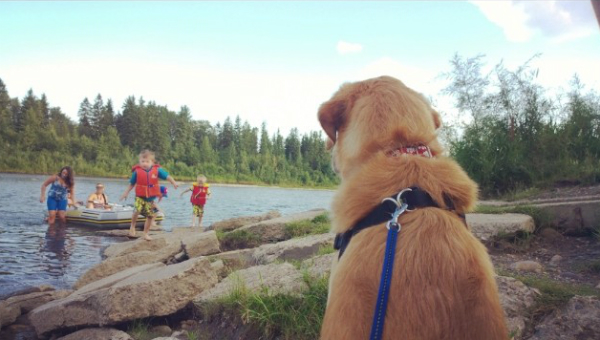
Because I adopted Buster when he was two years old, I don’t know if he swam much in his early life, but I do know that my nervousness during our first few water encounters probably didn’t bolster his confidence. According to the canine hydrotherapists at Waterpaws, it’s the early experiences that form a dog’s feelings about swimming.
“If they have a good first experience they’ll thrive in the water, but if they have a bad first experience it could be traumatizing and they’ll avoid water altogether,” says Steve Dent of Waterpaws.
It could also be that I haven’t given GhostBuster the right motivation to get his swim on.
“If you have a hunting dog, the best kind of toy would be a rubber duck or a decoy,” says Dent. “Then their basic instincts come out and they won’t really think about the water, they’ll just think about doing the task at hand — getting that toy.”
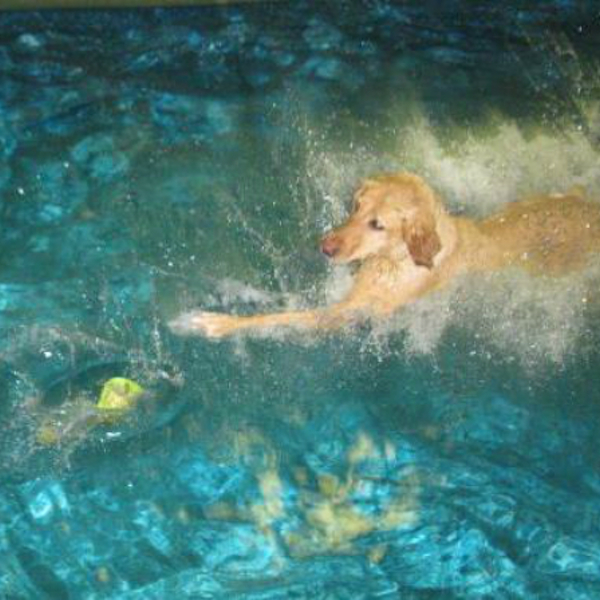
“Dogs who come to our pool are owner-motivated, food-motivated, or toy-motivated. We try out each of those each time they swim and find out what works for them.”
An indoor pool environment like the Waterpaws location in Saskatoon, Saskatchewan, is a great place for dogs to experience the water without some of the safety concerns. “It’s not open water and we can ensure the dogs feel comfortable before they even get their paws in the pool. It’s a safe environment for a positive swim, somewhere where it is a little bit more controlled,” explains Dent.
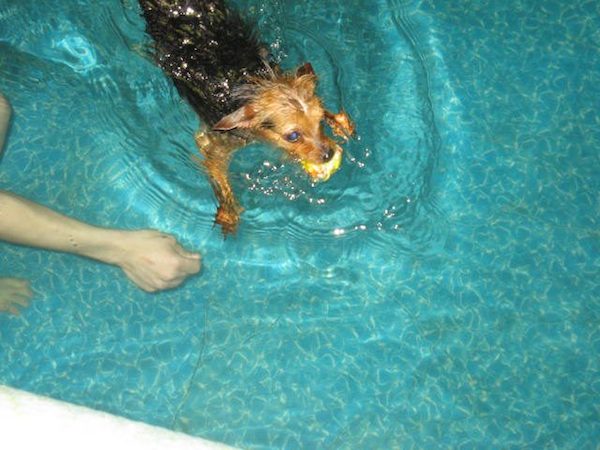
He says the work being done at Waterpaws extends beyond swimming lessons and into rehabilitation and wellness.
“There’s been quite a few dogs that have begun rehabilitation programs that allowed them to strengthen muscles and avoid surgery,” says Dent. Lui Yi says he’s seen hydrotherapy help dogs who can’t walk regain their mobility.
GhostBuster is in perfect health and is fully mobile, but I want him to comfortable swimming for safety reasons. Summer is already coming to a cold end in my part of the world, so Buster likely won’t be getting back in the water anytime soon. Since Waterpaws is located about 300 miles east of my home, it’s a little far for me to take Buster for frequent winter swims, but I do love the idea of having an indoor way for dogs to exercise during the coldest winter months.
Having access to an indoor pool during the winter also means your dog won’t lose the swimming skills he’s learned over the summer. GhostBuster didn’t really learn much about the water this year, so I guess he won’t really be losing any swimming smarts between now and next summer, when I’ll try to find him a nice calm lake.
Is your dog a good swimmer? Does she love or hate the water? Let us know in the comments!
Read related stories on Dogster:
- In Barcelona, a New Water Park Lets Pooches Cool Off in Style
- First-Time Swimmers: There’s No Shame in Mastering the Doggy Paddle
Featured Image Credit: Murilo Viviani, Unsplash

